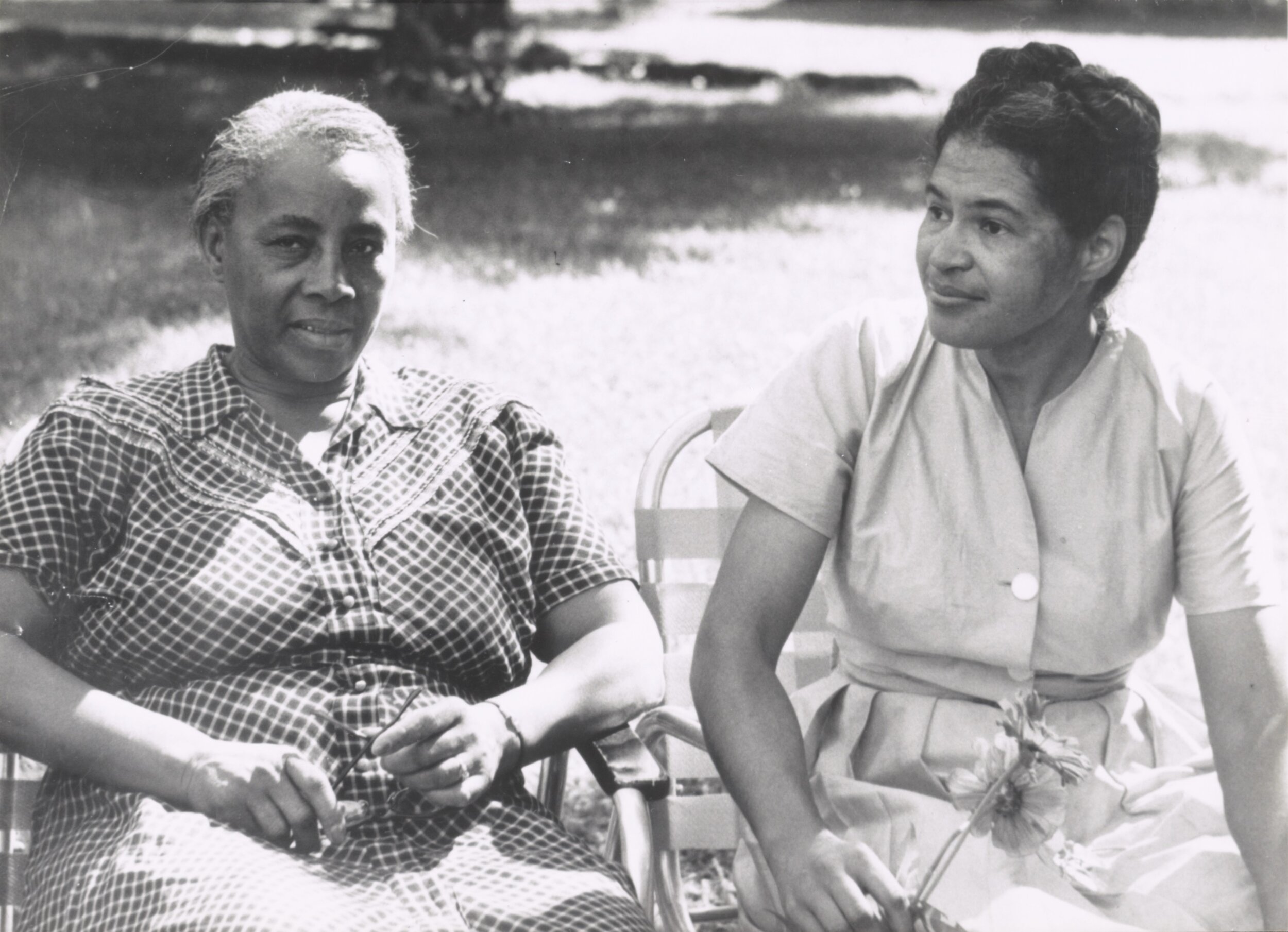The Politics of Children’s Literature: What’s Wrong with the Rosa Parks Myth
Reading by Herbert Kohl
This critical analysis of children’s books about Rosa Parks is an ideal text for discussion by elementary school teachers and parents. While there has been much new scholarship about Rosa Parks since this piece by educator and author Herbert Kohl was first published by Rethinking Schools in 1989, the dominant narrative about Parks remains much the same.
As a companion to this reading, we recommend the young adult title by Jeanne Theoharis and Brandy Colbert, The Rebellious Life of Mrs. Rosa Parks, and a collection of lessons to accompany the book and film of the same name.
Rosa Parks (r) with Septima Clark at the Highlander Folk School, a multiracial center for labor and civil rights activists to study and strategize together. © Highlander Research and Education Center. Photo by Ida Berman, 1955. Library of Congress.
Issues of racism and the direct confrontation between African American and European people in the United States are usually considered too sensitive to be dealt with directly in the [early] elementary school classroom. When African Americans and European Americans are involved in confrontation in children’s literature, the situation is routinely described as a problem between individuals that can be worked out on a personal basis. In the few cases where racism is addressed as a social problem, there has to be a happy ending.
This is most readily apparent in the biographical treatment of Rosa Parks, one of the two names that most children in the United States associate with the Civil Rights Movement in the South during the 1960s, the other being Martin Luther King Jr.
The image of “Rosa Parks the Tired” exists on the level of a national cultural icon. Dozens of children’s books and textbooks present the same version of “Rosa Parks and the Montgomery Bus Boycott.” This version can be synthesized into the story that follows:
Rosa Parks was a poor seamstress. She lived in Montgomery, Alabama, during the 1950s. In those days there still was segregation in parts of the United States. That meant that African Americans and European Americans were not allowed to use the same public facilities such as restaurants or swimming pools. It also meant that whenever it was crowded on the city busses African Americans had to give up seats in front to European Americans and move to the back of the bus.
One day on her way home from work Rosa was tired and sat down in the front of the bus. As the bus got crowded, she was asked to give up her seat to a European American man, and she refused. The bus driver told her she had to go to the back of the bus, and she still refused to move. It was a hot day, and she was tired and angry and became very stubborn.
The driver called a policeman, who arrested Rosa.
When other African Americans in Montgomery heard this, they became angry too, so they decided to refuse to ride the busses until everyone was allowed to ride together. They boycotted the busses.
The boycott, which was led by Martin Luther King Jr., succeeded. Now African Americans and European Americans can ride the busses together in Montgomery.
Rosa Parks was a very brave person.
This story seems innocent enough. Rosa Parks is treated with respect and dignity, and the African American community is given credit for running the boycott and winning the struggle. On closer examination, however, this version reveals some distressing characteristics that serve to turn an organized and carefully planned movement for social change into a spontaneous outburst based upon frustration and anger.
The following annotations on the previous summary suggest that we need a new story, one not only more in line with the truth, but one that shows the organizational intelligence and determination of the African American community in Montgomery, as well as the role of the bus boycott in the larger struggle to desegregate Montgomery and the South. ■

